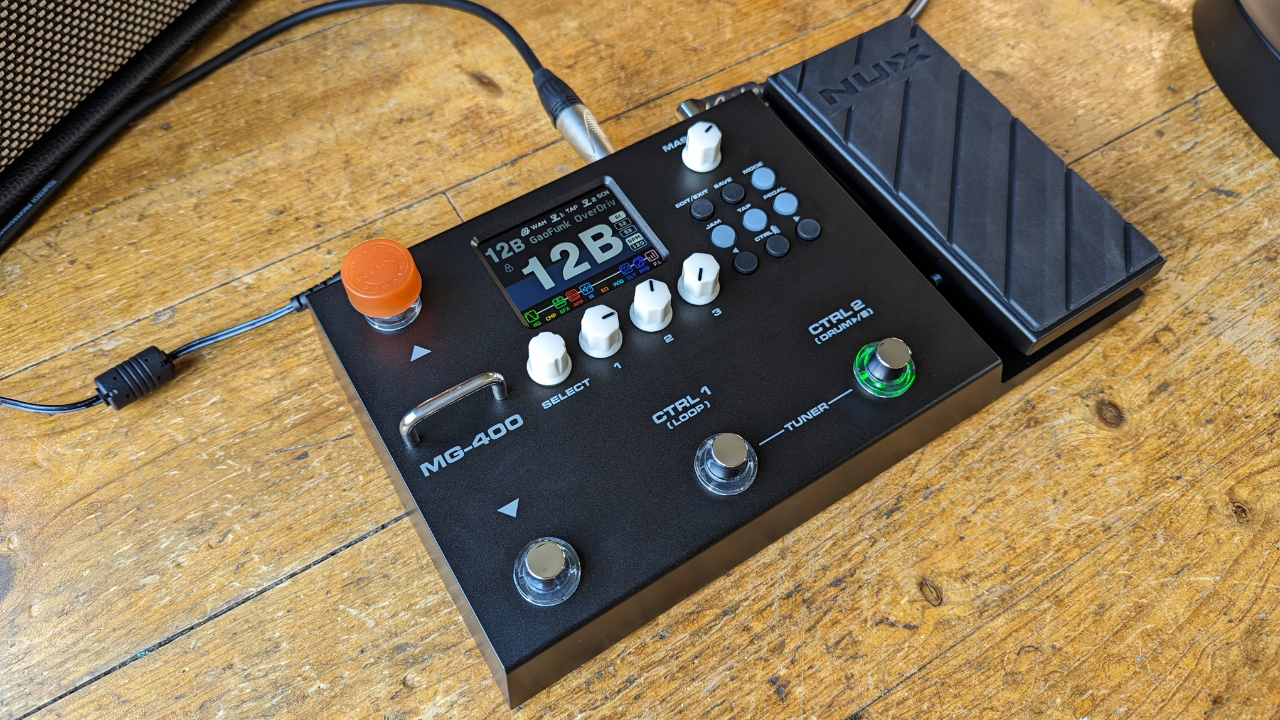MusicRadar Verdict
There are some small niggles but for a beginner guitar player, there’s not much wrong with the NUX MG-400. If you’re not afraid to tweak sounds it offers plenty of high-quality guitar tones that will keep new players coming back for more.
Pros
- +
Loads of amps and effects
- +
Super easy to use
- +
Excellent looper function
- +
Works as an audio interface
Cons
- -
Presets aren’t the best
- -
Sensitive expression pedal switch
MusicRadar's got your back
Around twenty years ago when I was first learning how to play guitar, options for multi-effects pedals and practice amps were severely limited compared to what’s on offer these days. My first pedal, the humble Zoom 606, wasn’t too dissimilar in looks from the NUX MG-400 but looks are where the similarities end.
The MG-400 is a feature-packed budget multi-effects pedal aimed squarely at the beginner guitar player market, but nowadays that’s a hotly contested area of the music industry. Things like the Line 6 POD Express, Hotone Ampero, Mooer GE200, Vox Stomplab, and many others are all competing for the attention of the beginner guitar player. So how will the MG-400 stack up against some stiff competition? Let’s find out…
NUX MG-400 review: Features
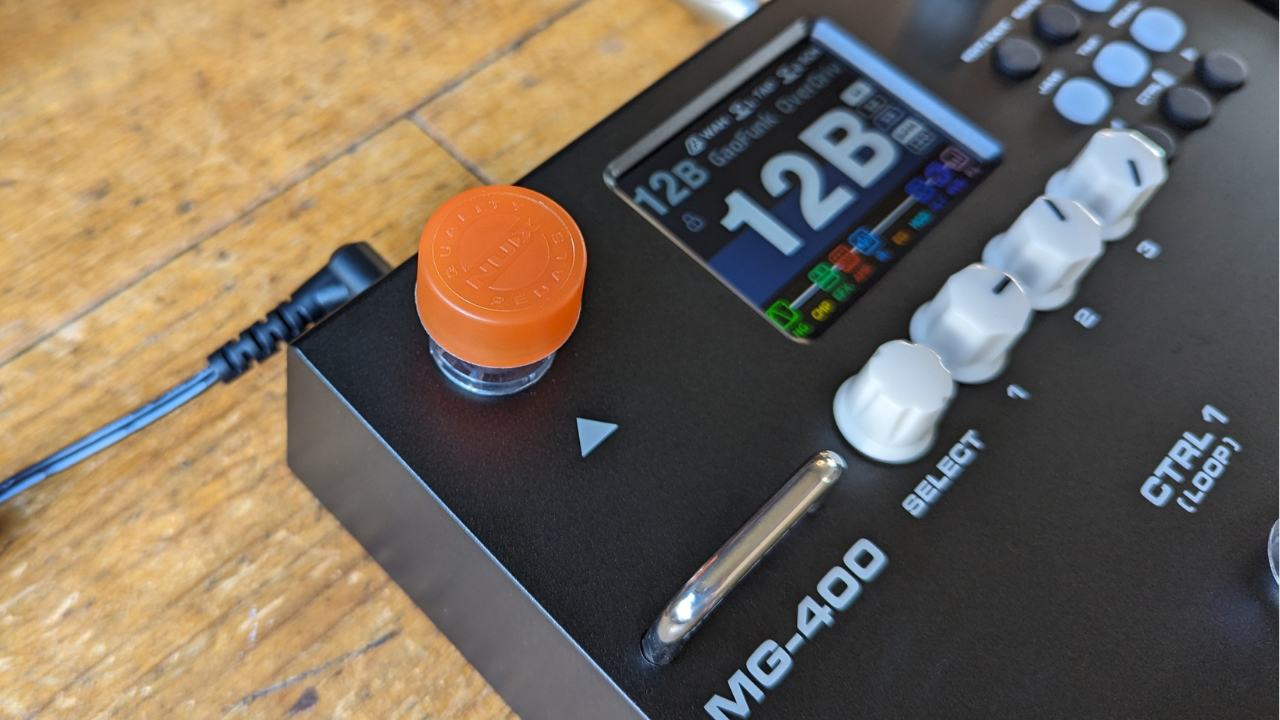
As with the majority of multi-effects pedals these days, the MG-400 goes way beyond just replicating tried and tested effects. It features 25 amp models, 25 guitar cabs, and 48 effects models to sink your teeth into, so plenty to keep even advanced players happy. The models cover everything from classic clean amps based on Fender or more modern amps from Matchless. If you want to up the gain then you’re well served here too, with classic Marshall emulations as well as higher-gain Mesa and Bogner models.
The effects also cover all of the most popular stompboxes, with overdrive, distortion, fuzz, modulation, delay, and reverbs, as well as some more utilitarian models like EQs, compression pedals, and a noise gate. There isn’t much in the way of esoteric effects like synth pedals or envelope filters, which is to be expected as this pedal is directed at beginner guitarists.
On the unit itself, you’ve got two footswitches for cycling through presets, with the upper switch coming with a footswitch topper to make things a little easier. Two control footswitches serve multiple purposes, being used to select ‘scenes’ within a preset bank, as controls for the looper and jam functions, and when pressed together, activating the onboard tuner.
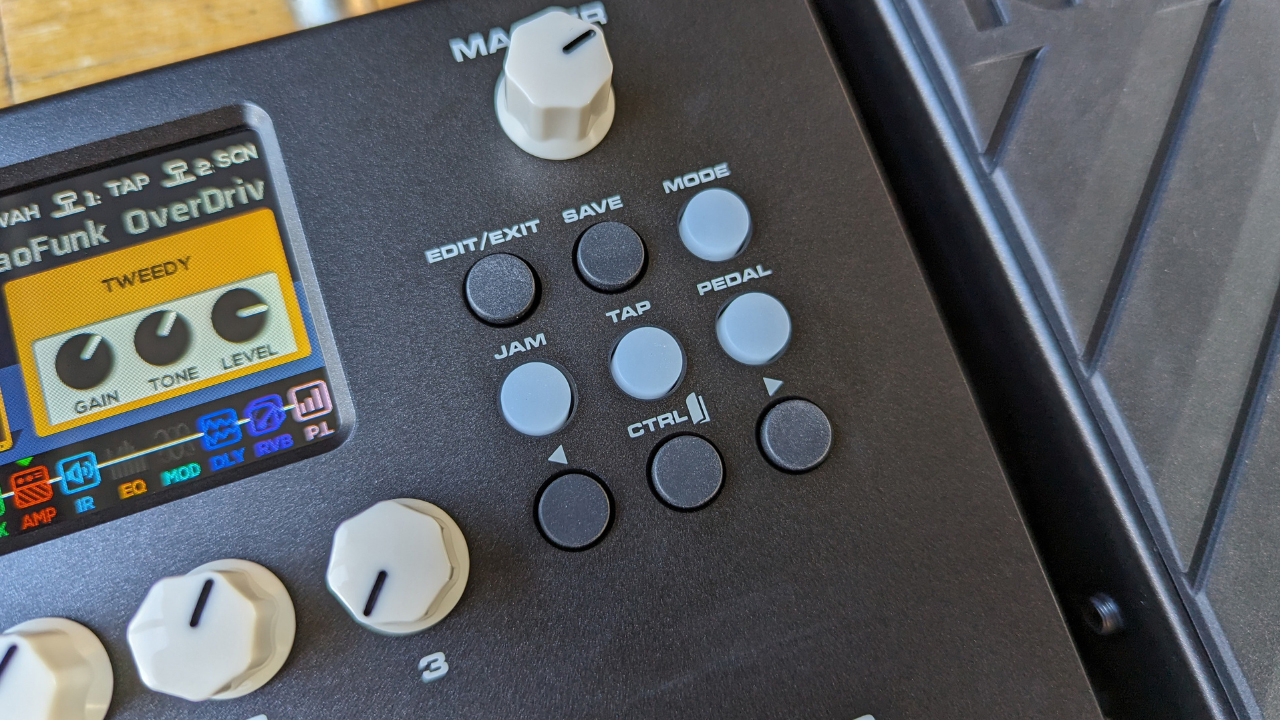
Underneath the colour display, there is one endless encoder and three regular knobs for controlling various parameters within your preset. To the right of those are various soft touch buttons for deeper menu diving when editing presets, more on which later. A master volume knob sits above these buttons and to the far right, you have an expression pedal with a rubber-gripped top and a debossed NUX logo.
On the top of the unit, there is a single 1/4-inch input with a 1/8-inch auxiliary in alongside it. The output section features stereo 1/4-inch outputs, a 1/8-inch headphone socket, and a USB-C out for recording. There’s also a dedicated power switch as well, rounding off a simple, yet very usable set of connection options.
NUX MG-400 review: Usability
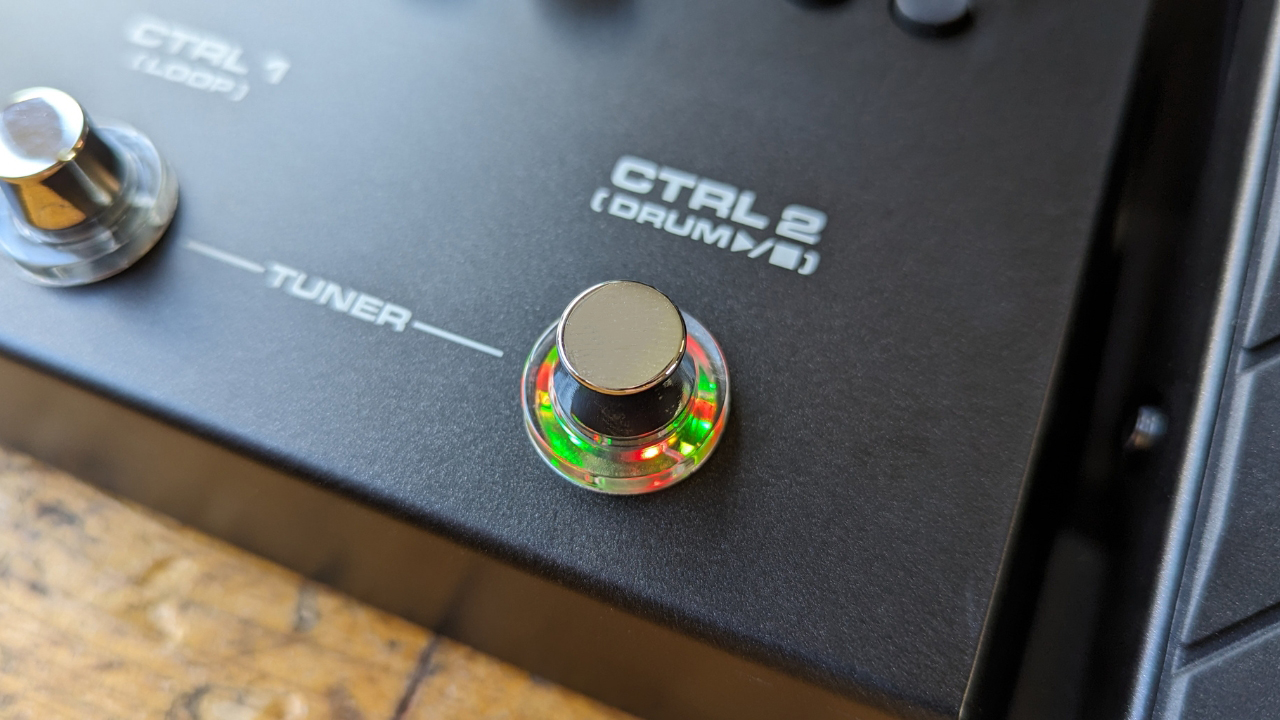
Getting started with the MG-400 is as easy as a multi-effects pedal can be and armed with my trusty Telecaster and a pair of Beyerdynamic headphones I was soon clicking away, auditioning the 65 patches it comes pre-loaded with. The screen is a nice size and displays brightly in a variety of lighting conditions, although some of the info might be difficult to discern from standing if you don’t have 20/20 vision.
Each patch has three ‘scenes’ which are accessed via the control 2 footswitch. Similar to the snapshots on the Line 6 HX Stomp, they allow you to add or remove effects from the chain without changing to a different preset. For example, scene 1 will be your base tone with amp, cab, and reverb, scene 2 adds a chorus pedal into the signal chain while scene 3 adds an overdrive pedal and some delay for that epic guitar solo. It’s an incredibly useful feature that saves you setting up multiple patches for the same song.
Editing patches is fairly self-explanatory if you’ve used something like this before, and even if you’re totally new to the game it shouldn’t take too much time to get up to speed as it has more buttons than your typical multi-effects pedal. The edit/exit button lets you dive into the selected preset for editing with the two small black arrow buttons taking you from one end of your signal chain to the other, while the select and numbered knobs adjust the particular amp or effect you’re looking at.
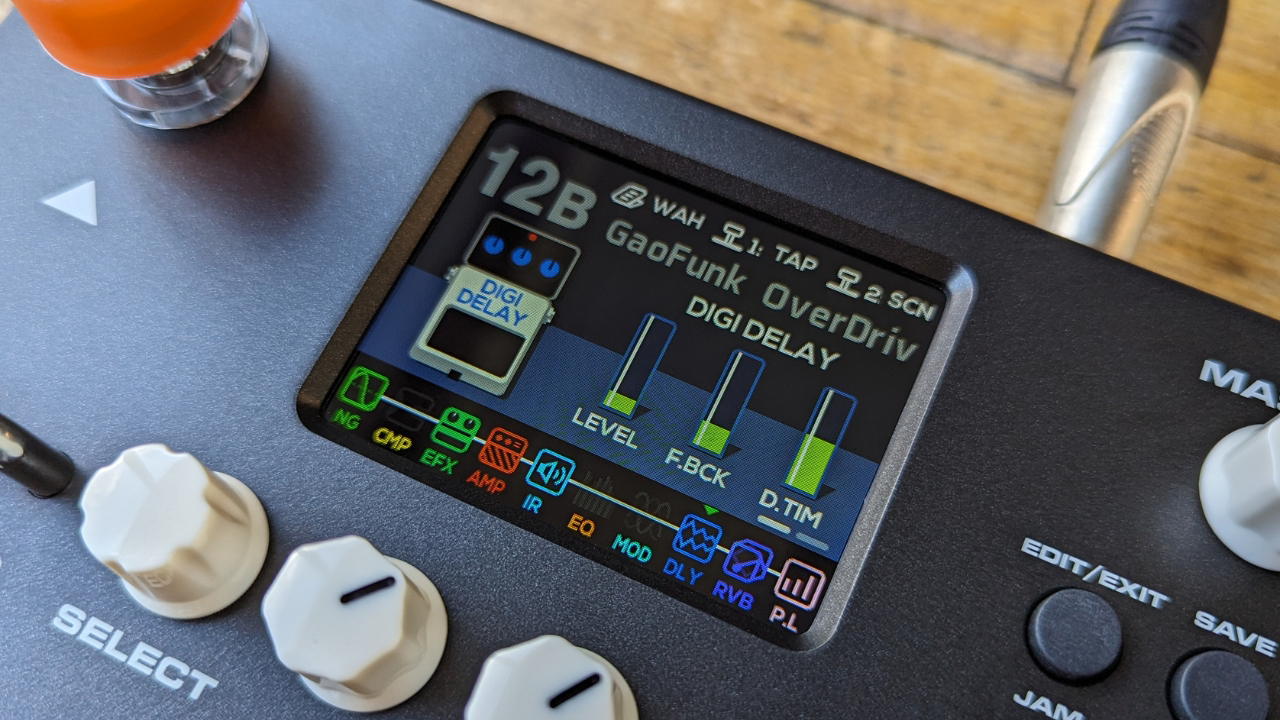
The jam button is used to access the onboard looper as well as a selection of built-in drum beats for you to jam along with. Cycling through the styles using the left and right arrows you can select a beat using the select knob and there are plenty of genres to pick from including rock, blues, and metal, as well as my personal favourite ‘bald’ - presumably meaning ballad. The sounds are basic but with 60 different patterns to play with, encompassing a variety of time signatures and tempos they’ll cover pretty much all the bases for a beginner.
The jam page also gives you access to the built-in looper which is a simple single-button affair, but a powerful tool for the beginner guitar player. One click of the footswitch gets you recording, with another to end the passage. The MG-400 auto detects the tempo of your playing too which is a nice touch. A second single press allows you to start overdubbing another loop on top of your first, with a double tap stopping playback and a hold while the loop is stopped clearing all of your loops. It’s a great tool for practicing and songwriting, especially when you use the built-in rhythms to jam along to. These can also be manipulated using the tap tempo button and usefully, you can exit the looper page and leave it playing, before changing your guitar tone and recording a fresh loop by jumping back in.
Hooking up the MG-400 to my PC was a seamless experience too. All I had to do was download the QuickTone app from the website and I was able to start importing my favourite York Audio impulse responses, adding a lot to the overall sound of the unit - more on which later. An install of the driver also had me up and running in Pro Tools in quite literally a few minutes, so it ticks all the boxes when it comes to being easy enough for any beginner to get their own recording rig going.
NUX MG-400 review: Sounds
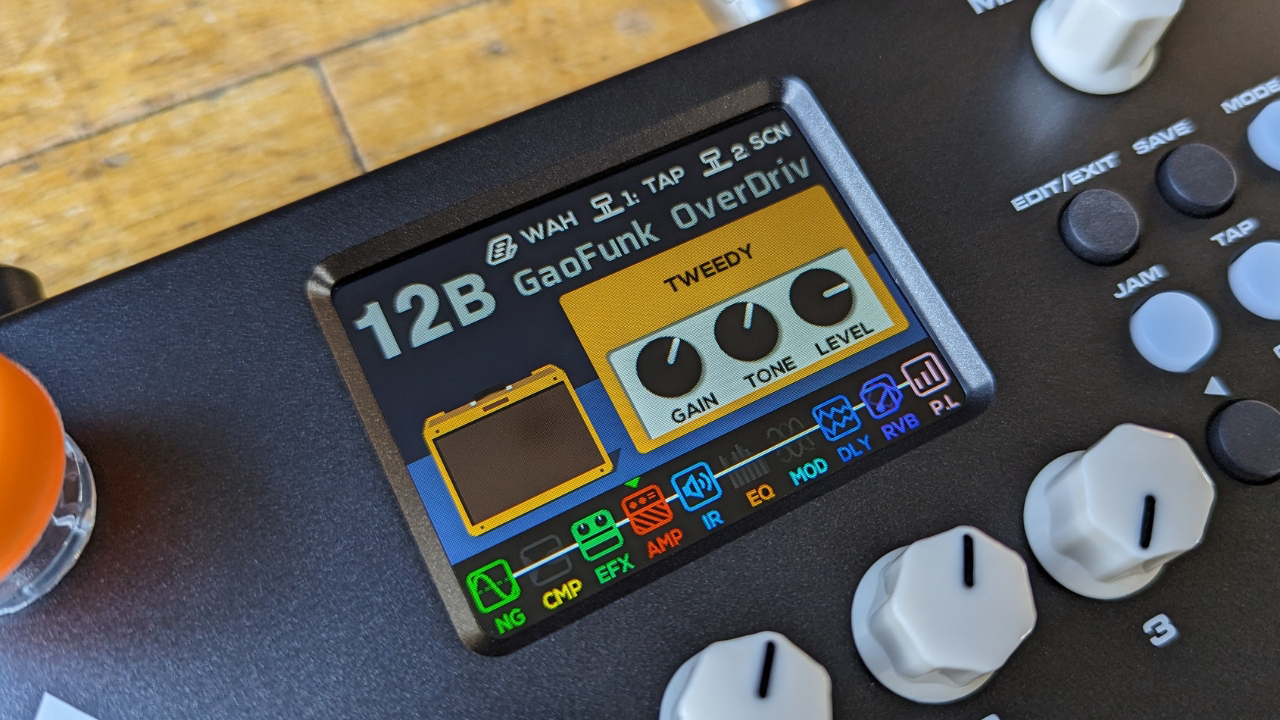
There’s an excellent selection of amps, cabs, and effects in the MG-400, but I’ll admit to not being overly impressed with the presets it comes shipped with. I found them to be a tad uninspired, especially compared to the brilliant selection on the NUX MG-300 which I recently tested. There are a lot of weird choices in terms of the scenes within a patch too, with large volume jumps, far too judicious uses of delay and chorus, as well as some very harsh EQ additions. There are some great presets there if you search for them, but these are few and far between.
I had much more success editing the presets myself, tuning in much more pleasing-sounding EQ settings on the amplifiers, and dialling back the heavy mix of effects. I also found a definite jump in quality using my own impulse responses versus the stock ones, although, for a beginner guitarist, the stock ones will do the job just fine. There are some fantastic amp tones here, but you will need to tweak them to get the very best out of the MG-400. There are plenty of paid and free presets you can download online too if you don’t fancy editing your own.
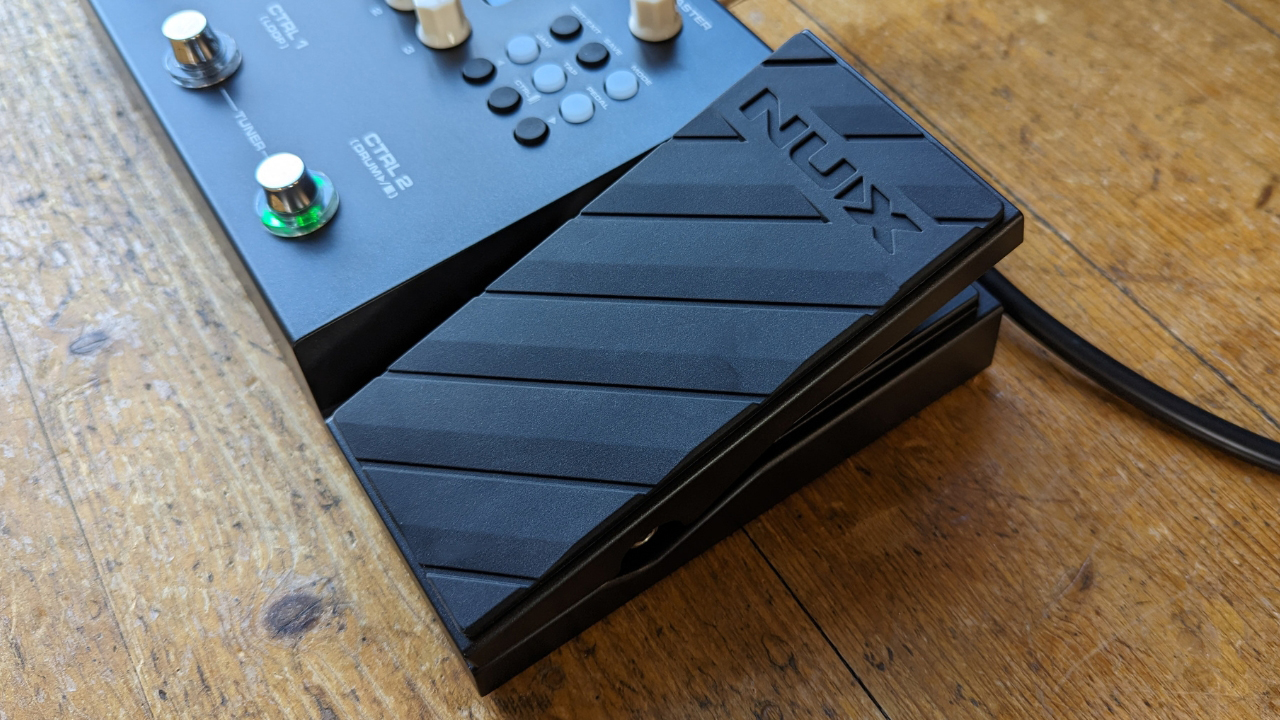
Once I’d tweaked things I managed to get some properly nice clean tones with plenty of ambience offered via the reverbs and delays. There’s a nice shimmer reverb and the panned delay effect is really fun, especially with a pair of headphones on. The mid-gain tones are pleasing to the ear too, and although some of the high-gain tones have a little digital harshness, these are tameable by adjusting the gain, changing the EQ, or using a different impulse response.
One thing I did find a little iffy was the wah function on the expression pedal. The switch to turn it on is very sensitive which means you can accidentally turn it off quite easily, especially if you’re doing your best Hendrix impression during a rendition of Voodoo Child. I may have gotten a faulty unit and to be honest, I’m not much of a wah connoisseur so it didn’t bother me that much, but if you do like to use the effect a lot, you’d be much better off with the MG-300 which handles wah in a much more robust fashion.
NUX MG-400 review: Verdict
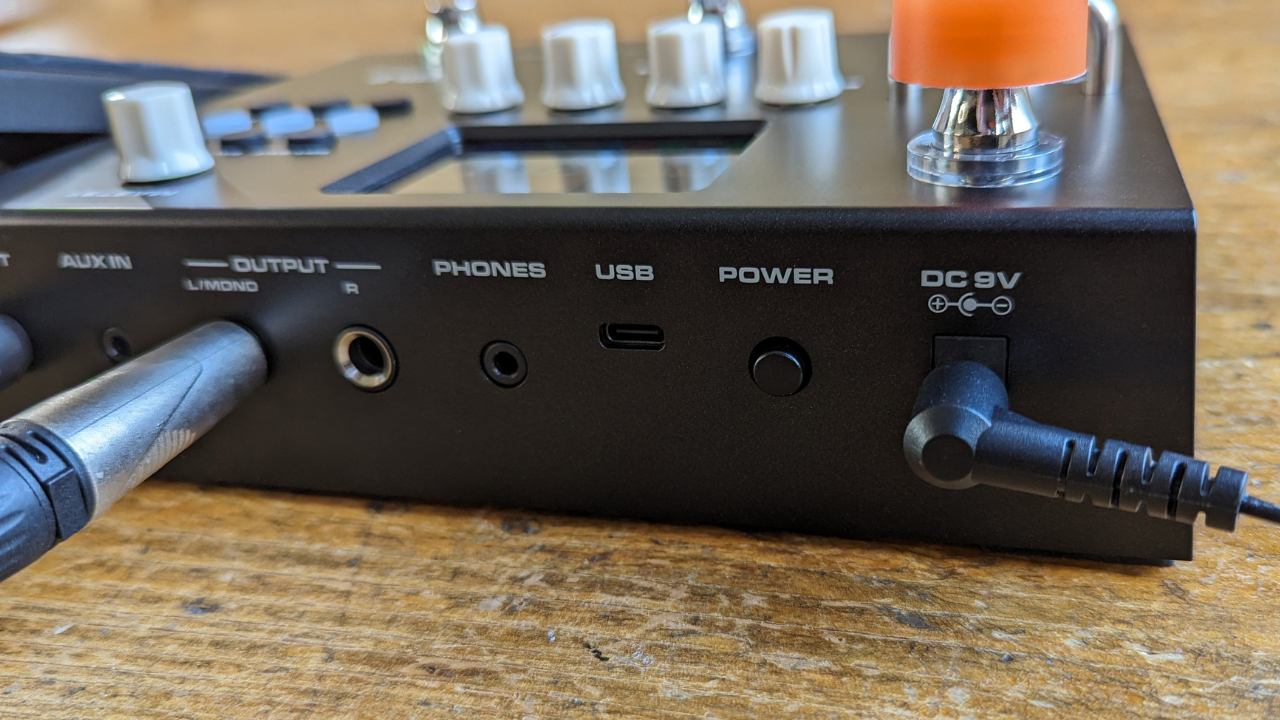
A few small faults aside, the NUX MG-400 is a great choice for beginner guitarists who don’t mind getting their hands dirty when messing around with sounds. There’s more than enough functionality here to keep you going for a very long time into your guitar-playing career and plenty of high-quality sounds that, with a little editing will have you sounding like your guitar heroes in no time.
NUX MG-400 review: Specs
- Price: $229 / £199 / €195
- Type: Amp modeler and multi-effects
- Key features: 25 amp models, 25 cabs, 48 effects, expression pedal
- Connections: 1 x 1/4-inch input, 2 x 1/4-inch outputs, 1 x 1/8-inch headphones, 1 x 1/8-inch aux in, 1 x USB-C port
- Contact: NUX

Matt is a Junior Deals Writer here at MusicRadar. He regularly tests and reviews music gear with a focus on audio interfaces, studio headphones, studio monitors, and pretty much anything else home recording-related. Matt worked in music retail for 5 years at Dawsons Music and Northwest Guitars and has written for various music sites including Guitar World, Guitar Player, Guitar.com, Ultimate Guitar, and Thomann’s t.blog. A regularly gigging guitarist with over 20 years of experience playing live and producing bands, he's currently studying Sound Engineering and Music Production at Spirit Studios in the UK.
“Every note counts and fits perfectly”: Kirk Hammett names his best Metallica solo – and no, it’s not One or Master Of Puppets
Ranked: Bon Iver's albums, from Sable, Fable to For Emma, Forever Ago
“Its mission is simple: unleash the power of any amplifier or line-level source without compromise”: Two Notes promises a “watershed” in tube amp control with the Torpedo Reload II
